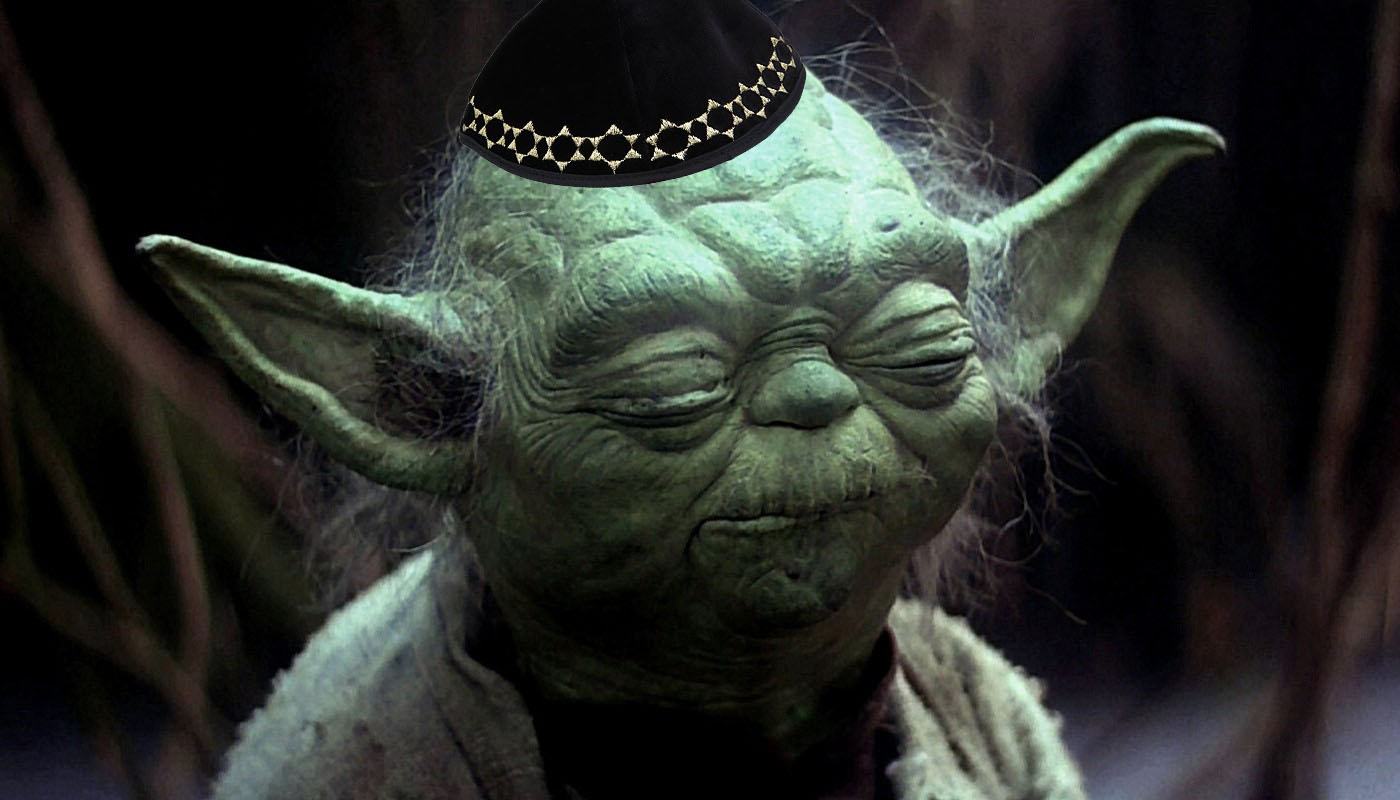A young man, alone in the “hive of scum and villainy” he comes from, becomes inspired by an omnipotent force to carry out a message of clarity and goodness. Basically, your average boy finds religion.
Luke Skywalker sought something greater than the desolate deserts of Tatooine — a place so devoid of any happiness that the former mining-settlement-asteroid Polis Massa looks like a Purim party in full-swing, in comparison. So, too, did the Patriarch Abraham as he challenged that which he had been born into in the (though more civilized) deserts of Ur.
Skywalker discovers — by means of the hermit, Ben Kenobi — that he is sensitive to the almighty, all-empowering essence known as the Force (which may as well be spelled F-rce). An introspective Kenobi describes the Force: “It surrounds us and penetrates us. It binds the galaxy together.” In response, an excited yet reluctant Skywalker agrees to leave behind all he knows in order to spread the essence of the Force across the galaxy.
In a similar vein, Abraham found himself open to the word of the all-powerful One. He was commanded to forsake the ways of his life prior to speaking with G-d, and to forsake his father (a path that Skywalker, however, did not originally know he was being led down). Upon his covenant with G-d, Abraham left behind all he knew and set out to the Promised Land.
The uncanny resemblances between Judaism and Star Wars don’t stop there. Upon focusing in on the films’ iconic antagonist, Darth Vader, speculation arises: why on Earth are there three lines of Hebrew — one of which is upside down — on the Sith Lord’s chest plate? One accepted interpretation is that the lines are based on a passage from Exodus regarding repentance for misdeeds; another interpretation claims that the minuscule writing says “His deeds will not be forgiven until he is proven innocent.”
Further similarities arise between the narratives when considering the teachings of Skywalker’s wise mentor, Jedi Master Yoda (whose name bears a suspicious resemblance to the Hebrew yodea, meaning “to know”). A significant portion of the precocious Skywalker’s training consists of Yoda’s repeated admonition to eschew evil: “A Jedi’s strength flows from the Force. But beware of the dark side.” As is explained in a piece on Star Wars’ Jewish themes on the Aish HaTorah website, the concept of the “dark side” of the Force draws parallels to the Jewish idea of Yetzer Hara — “the self-destructive bodily forces that pull us away from G-d.” Rebbe Yoda is essentially warning the prophetic young pupil not to stray away from the holy essence that binds all life together — an incredibly Jewish concept.
These personal realizations are but a few of the myriad of connections between Star Wars and Judaism, and I encourage you to delve into the subject further. May no Bothans die in relaying this information to you; should this be received in the form of a hologram as presented by an astromech droid with a jammed restrictor bolt, please let me know — that’s the kind of thing I would want to hear about.
Though I dream a hopeless dream to be able to celebrate next year’s holiday with a sunset from one of Yavin’s three inhabitable moons, or by streaming some tunes by Mordechai Ben David from the Millennium Falcon’s newly replaced satellite dish that seems to have been taken from a Corellian Cruiser, I will be content to celebrate the 4th of May by polishing my Yoda and Chewbacca bobbleheads, practicing my fantastically on-point Chewie roar, and eagerly googling new trailers of the skeptically awaited Star Wars: The Force Awakens. Shavuah Tov, and May the Fourth be with you!

